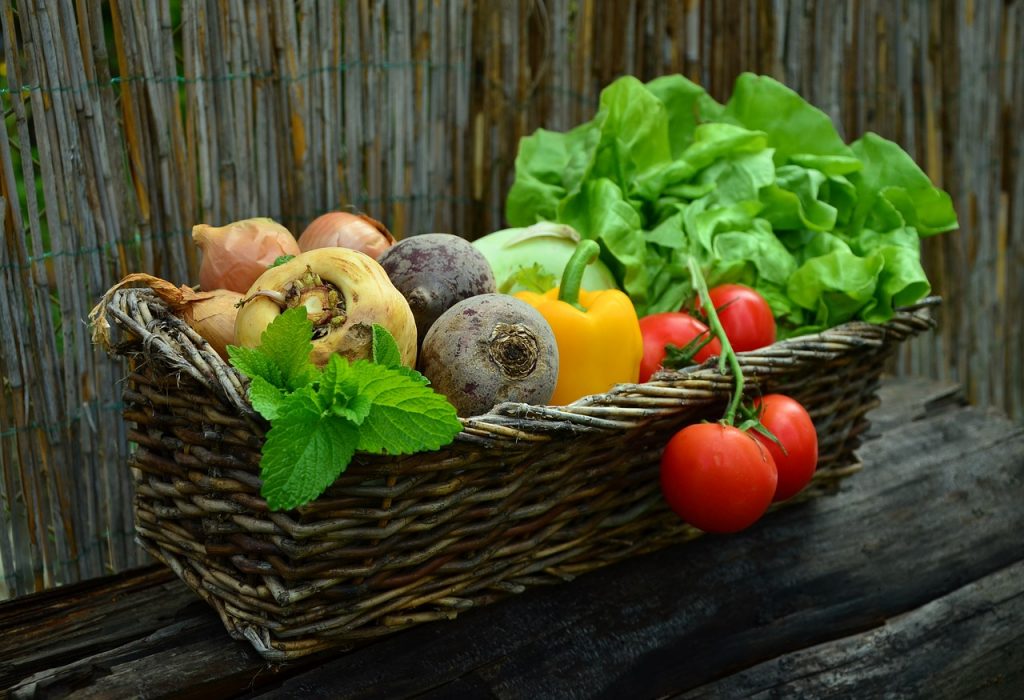Vegetables are a crucial part of a healthy and balanced diet. Incorporating more vegetables into your daily meals can offer numerous benefits, including improved digestion, enhanced immune function, and a reduced risk of chronic diseases. Eating more vegetables is not only good for your health, but it can also be delicious and satisfying.
Harvard School of Public Health says:
A diet rich in vegetables and fruits can lower blood pressure, reduce the risk of heart disease and stroke, prevent some types of cancer, lower risk of eye and digestive problems, and have a positive effect upon blood sugar, which can help keep appetite in check. Eating non-starchy vegetables and fruits like apples, pears, and green leafy vegetables may even promote weight loss.
By increasing your vegetable intake, you can provide your body with the necessary nutrients it needs to function optimally.
Key Takeaways
- Incorporating more vegetables into your diet can lead to improved health and wellbeing.
- Vegetables are a nutritional powerhouse, providing essential vitamins, minerals and fibre.
- Increasing your vegetable intake can help with digestion, weight management, and immune function.
- Practical tips and strategies can help you easily incorporate vegetables into your daily meals.
- By eating more vegetables, you can reduce the risk of chronic diseases such as heart disease, cancer, and obesity.
The Nutritional Powerhouse: Benefits of Eating Vegetables
Vegetables are a true nutritional powerhouse, offering a wide range of benefits for your health and wellbeing. Incorporating more vegetables into your diet can have a transformative impact, strengthening your immune system, reducing inflammation, and improving digestive function.
Vegetable Nutrition
Vegetables are packed with essential vitamins and minerals that are crucial for optimal health. These include:
| Vitamin | Function | Sources |
| Vitamin A | Boosts immune function and promotes eye health | Carrots, sweet potatoes, spinach |
| Vitamin C | Supports collagen production and enhances iron absorption | Citrus fruits, broccoli, bell peppers |
| Vitamin K | Essential for healthy blood clotting and bone health | Kale, spinach, broccoli |
| Potassium | Regulates blood pressure and supports heart health | Sweet potatoes, avocados, bananas |
In addition to vitamins and minerals, vegetables are also rich in fibre, which promotes digestive health and helps you feel fuller for longer periods of time. This can be particularly beneficial for weight management and reducing the risk of chronic diseases such as heart disease and diabetes.
Increasing Your Vegetable Intake: Easy and Effective Ways
Are you looking for simple ways to incorporate more vegetables into your diet? Look no further! By following these tips and strategies, you can increase your vegetable intake effortlessly and enjoy the health benefits they offer.
1. Add Vegetables to Your Favorite Recipes
One of the easiest ways to eat more vegetables is to add them to your favourite recipes. Whether it’s adding spinach to your scrambled eggs or tossing some peppers into your pasta sauce, incorporating vegetables into dishes you already enjoy is a simple way to increase your vegetable intake.
2. Swap Out Snacks for Vegetables
Instead of reaching for a bag of chips or a candy bar, snack on vegetables such as carrot sticks, cucumber slices, or cherry tomatoes. Keep a container of pre-cut veggies in the fridge so that you can easily grab them when hunger strikes.
3. Try New Cooking Methods
Experiment with different cooking methods to add variety to your vegetable dishes. Roasting, grilling, and stir-frying are all great options that can bring out different flavours and textures in your vegetables. Plus, they’re quick and easy!
4. Make Vegetables the Star of the Show
Instead of treating vegetables as a side dish, make them the main event! Try dishes such as vegetable stir-fry, ratatouille, or vegetable lasagne to showcase the delicious flavours and textures of different vegetables.
5. Get Creative with Vegetable Serving Suggestions
Get creative with your vegetable serving suggestions to make them more appealing. Top carrots with hummus or guacamole, fill celery with peanut butter or season broccoli with garlic and spices. The possibilities are endless!
By incorporating these easy and effective ways to eat more vegetables, you can increase your vegetable intake and enjoy the many benefits they offer. Remember to start small and gradually increase your intake to make the transition easier. Your body (and taste buds) will thank you!
The Importance of Variety: Exploring Different Vegetable Options
If you want to increase vegetable intake, it’s essential to explore different vegetable options. Incorporating a variety of vegetables into your diet is not only important for your taste buds but also for your overall nutrition.
Each vegetable type has unique health benefits that can enhance your well-being in various ways. That’s why nutritionists talk about “eating the rainbow“. For example, leafy greens such as spinach and kale are high in vitamin K, which is essential for bone health, while sweet potatoes are rich in vitamin A, which supports your immune system.
| Vegetable Type | Health Benefits |
| Cruciferous Vegetables (Broccoli, Brussels Sprouts, Cauliflower) | Rich in fiber, vitamin C, and antioxidants. May help reduce the risk of certain cancers. |
| Root Vegetables (Carrots, Sweet Potatoes, Beets) | High in fiber and vitamins A and C. May improve blood sugar control and support eye and skin health. |
| Leafy Greens (Spinach, Kale, Swiss Chard) | Excellent source of vitamins K, A, and C. May support bone health and reduce inflammation. |
| Cruciferous Vegetables (Broccoli, Brussels Sprouts, Cauliflower) | Rich in fibre, vitamin C, and antioxidants. May help reduce the risk of certain cancers. |
| Nightshade Vegetables (Tomatoes, Peppers, Eggplant) | Good source of vitamin C and antioxidants. May have anti-inflammatory properties. |
Incorporating a variety of vegetables into your diet not only ensures you receive a broad range of nutrients but also keeps your meals exciting and fresh. Experiment with different recipes and cuisines to explore new vegetable options and find your favorites.
By incorporating a variety of vegetables into your diet, you can experience the many advantages of vegetables and enhance your overall nutrition. Don’t be afraid to try new things and see how different vegetables can benefit your health.
Sneaky Strategies for Picky Eaters: Getting Kids (and Adults) to Love Vegetables
Do you struggle to get yourself or your family members to eat vegetables? You’re not alone! But don’t worry; there are sneaky strategies that you can use to encourage vegetable consumption and make them enjoyable for everyone.
Blend Your Vegetables
One easy way to incorporate more vegetables into your meals is by blending them into sauces and soups. By doing this, you can add veggies like spinach, zucchini and carrots to meals without anyone even noticing. You can also blend vegetables into smoothies, which are an excellent way to consume more greens.
Make It Fun
Getting creative with your food presentation is an excellent way to encourage vegetable consumption, especially for kids. Use cookie cutters to cut vegetables into fun shapes or create fun designs on their plates. You can also turn vegetable consumption into a game by challenging your family members to try new vegetables and rewarding them with a prize.
Get Them Involved
When it comes to meal preparation, getting your family members involved in the cooking process can increase their interest in vegetables. Assign age-appropriate tasks like washing, peeling, and chopping vegetables. This can also be a fun bonding activity for the whole family.
Sneak Vegetables Into Their Favourite Meals
If your family members are hesitant to try new dishes with vegetables, consider adding them to their favourite meals. For example, if they love pizza, add some veggies on top as a topping. If they love pasta, add some vegetables to the sauce.
Lead By Example
If you want to encourage your family to eat more vegetables, you need to lead by example. Make sure that you’re eating vegetables regularly and showing enthusiasm about trying new ones. Your family members are more likely to follow your lead if they see that you’re making an effort to eat more vegetables too.
By using these sneaky strategies, you can gradually increase your family’s consumption of vegetables. With time, they may even grow to love them! Remember, it’s all about finding what works for your family and making vegetable consumption a fun and enjoyable experience.
Maximising Vegetable Nutrition For Increased Health Benefits
While all vegetables are beneficial to your health, certain cooking and storage methods can affect their nutritional value. For example, boiling vegetables for extended periods of time can cause the loss of water-soluble vitamins such as vitamin C and certain B vitamins.
On the other hand, lightly steaming or sautéing vegetables can help retain their nutritional value while still making them delicious. Proper storage of vegetables can also help to maintain their nutritional content. For example, storing vegetables in the fridge can help to preserve their vitamins and minerals.
And don’t forget salads – these don’t have to be boring and unappetising. Check out my blog post on the formula for an easy and satisfying salad.
Incorporating more vegetables into your diet can have a major impact on your overall health and wellbeing. The nutrients found in vegetables can help prevent chronic disease, promote healthy digestion, and support immune function. To maximize their nutritional benefits, it is important to prepare and store your vegetables properly.
So start today, and increase your vegetable intake to enjoy the amazing benefits of eating more vegetables. Your body will thank you for it!


